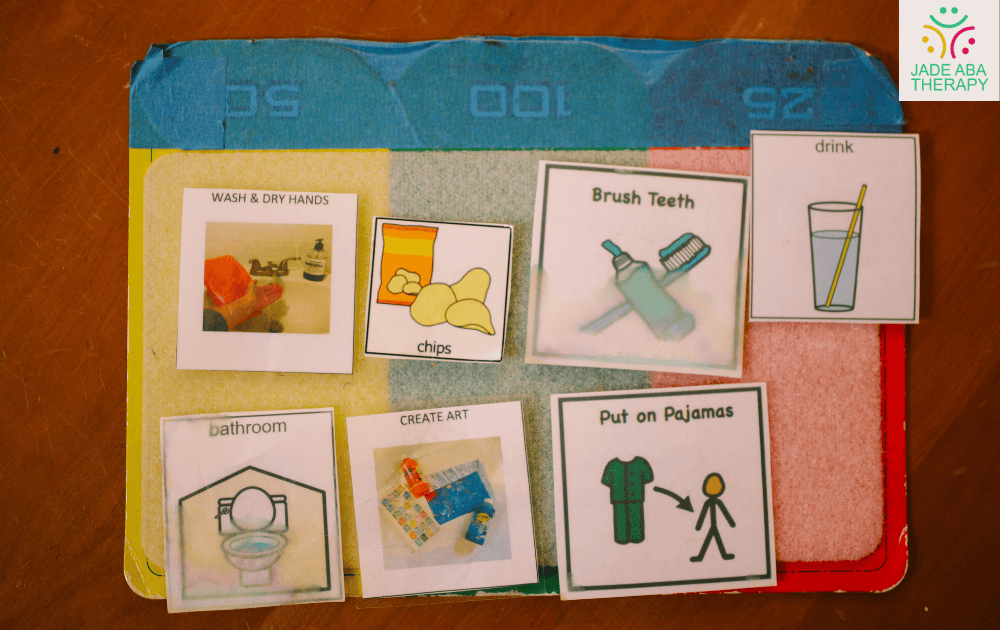Communication is essential in our everyday lives as it allows us to express our thoughts, needs, and emotions. However, for individuals with autism spectrum disorder (ASD), communication can present unique challenges. Augmentative and alternative communication (AAC) devices are designed specifically to support individuals with autism in their communication journey.
If you haven’t heard of them before, worry not. Without further ado, let’s delve into what AAC devices are and what benefits they offer.

What are AAC Devices?
AAC devices encompass a range of tools and strategies that assist individuals with autism in communicating effectively. Such devices provide an alternative means of communication for individuals who have difficulty with traditional speech. They are not intended to replace speech but rather to enhance and support communication.
They can take various forms, including pictures, symbols, gestures, sign language, visual aids, or speech output devices like computers. By using AAC devices, individuals with autism can express their thoughts, needs, and feelings more easily. They can also be customized to suit an individual’s specific communication abilities and preferences, making communication more accessible and empowering.
Benefits of AAC Devices
There are plenty of benefits that AAC devices have for individuals with autism. Here are some of them:

AAC devices are a valuable tool in promoting effective communication and empowering individuals with autism to express themselves more fully. By understanding what AAC devices are and the benefits they offer, parents, caregivers, and individuals with autism can explore these devices as a means to enhance communication and improve overall quality of life.
How AAC Devices Help Individuals with Autism
AAC devices for autism enable individuals to communicate in various ways beyond speech alone. These devices encompass a range of options, from simple apps downloaded on tablets to more advanced dedicated devices. They can be symbol-based, text-based, or multimodal systems, catering to the diverse needs and abilities of individuals with autism.
By using AAC devices, individuals with autism can:
- Express a wider range of words, thoughts, and emotions compared to using speech and gestures alone.
- Improve their communication skills and abilities, allowing for more effective and meaningful interactions with others.
- Enhance social interactions by initiating conversations, sharing preferences, and participating in various activities.
- Reduce frustration and anxiety by providing a reliable and consistent means of communication.
- Increase independence and autonomy by being able to communicate their wants, needs, and opinions in a variety of settings.
AAC devices, such as the Lingraphica AAC devices, are designed to evolve with the individual, supporting their communication needs throughout different stages of life. These devices offer a wide range of features and customization options, making it easier to communicate with diverse users.
Through the use of AAC devices, people with autism can break through limitations in communication and reach their full potential, which can improve their standard of life overall, interpersonal relationships, and self-expression.

Types of AAC Devices
There are two main categories of augmentative and alternative communication (AAC) devices: low-tech AAC devices and high-tech AAC devices. Each type offers unique features and benefits, catering to the specific communication needs of individuals with autism.
Let’s look at each of them.
Low-Tech AAC Devices
Low-tech AAC devices are often considered the more basic and traditional forms of communication support. These devices do not require any electronic components and are typically simple to use.
Some examples of such low-tech devices include:
- Pictures and Symbols – The use of pictures and symbols is a common low-tech AAC strategy. Visual aids such as picture cards, communication boards, or choice boards can help individuals with autism express their needs, preferences, and thoughts.
- Gesture and Body Language – Non-verbal gestures and body language can be effective forms of communication for individuals with autism. These include pointing, nodding, or using specific hand movements to indicate wants or needs.
- Sign Language – Sign language is a visual communication system that uses hand gestures, facial expressions, and body movements to convey meaning. American Sign Language (ASL) is a commonly used sign language system in the United States.
Low-tech AAC devices are often portable, easy to understand, and can be personalized to meet the specific communication needs of individuals with autism. They are particularly useful for individuals who may have difficulty operating or navigating high-tech devices.
High-Tech AAC Devices
On the other hand, high-tech AAC devices utilize technology to enhance communication abilities. These devices often have electronic components and offer a wider range of communication options.
Some examples of high-tech AAC devices include:
- Speech-Generating Devices – Speech-generating devices are electronic devices that produce spoken words or phrases based on user input. These devices can range from dedicated communication devices with specialized software to tablet-based apps that offer AAC functionality.
- Tablet-Based AAC Apps – AAC apps can be downloaded onto tablets or smartphones, turning these devices into powerful communication tools. These apps offer a variety of features, including customizable symbol-based or text-based communication systems, as well as voice output capabilities.
- Computer-Based AAC Software – Computer-based AAC software provides individuals with autism access to a more comprehensive range of communication tools. These software programs often offer advanced customization options to allow users to create personalized communication systems.
High-tech AAC devices provide individuals with autism the ability to communicate more effectively and efficiently. They offer a greater range of vocabulary options and customization features and may include features such as word prediction and voice output.
Importance of AAC Devices for Autism
Assistive technology, including AAC devices, is essential in supporting and enhancing communication for individuals with autism, irrespective of their speech ability. These devices provide a means for individuals who are non-verbal or have limited verbal abilities to express themselves effectively.
Keep in mind that AAC devices do not prevent a child from speaking and may actually increase speech. They provide a bridge that allows non-verbal children with autism to communicate a message to others, even if they are not able to speak it.
For minimally verbal children and teens who may be shy or hesitant to use traditional communication methods, such as speaking or gesturing, AAC devices can provide a sense of comfort and confidence.
These devices offer a non-threatening way to express thoughts, feelings, and needs, empowering individuals with autism to participate more actively in conversations and social interactions.
AAC devices also contribute to the development of language and communication skills. Children can learn the skills needed for AAC while they are already using it to communicate. This approach allows for simultaneous learning and application, as individuals are motivated to learn these skills when they experience the benefits of using AAC.

Choosing the Right AAC Device
There are several factors to consider when choosing the right AAC (Augmentative and Alternative Communication) device for individuals with autism. Understanding these factors and the customization features available can greatly enhance the effectiveness of the device in facilitating communication.
These factors are as follows:
- Communication Needs – Assess the specific communication needs of the individual with autism. Consider their current communication abilities, challenges, and goals. Some individuals may require a simple device with basic communication options, while others may benefit from a more advanced device with a wide range of features.
- Age and Developmental Level – Take into account the age and developmental level of the individual. Younger children may require devices with simpler interfaces and visual prompts, while older individuals may benefit from devices that offer more sophisticated language and communication options.
- Motor Skills – Consider the motor skills of the individual. Some AAC devices have touchscreens, while others may rely on physical buttons or switches. Choose a device that aligns with the individual’s motor abilities to ensure ease of use.
- Portability – Evaluate the need for portability. Some individuals may benefit from a portable device that can be easily carried and used in various environments, while others may primarily use the device in a specific setting, such as at home or in a classroom.
- Support and Training – Consider the availability of support and training resources for the chosen AAC device. Ensure that there are resources available to assist both the individual with autism and their communication partners in effectively utilizing the device.
Customization Features
Customization features play a crucial role in optimizing the functionality of AAC devices for individuals with autism. These features allow for personalization and adaptation to individual communication needs.
Make sure to consider the following customization options:
- Symbol Libraries – Look for devices that offer a wide range of symbol libraries, including both picture symbols and text options. This allows for flexibility in selecting symbols that best represent the individual’s vocabulary and communication preferences.
- Vocabulary and Language Customization – Choose devices that enable customization of vocabulary and language. This allows for the addition of personalized words, phrases, and sentences that are relevant to the individual’s daily life and interests.
- Visual Supports – Look for devices that offer visual supports, such as visual schedules, timers, and prompts, to aid in comprehension and organization.
- Access Method Customization – Consider devices that offer multiple access methods, such as touch, switch scanning, or eye gaze, to accommodate varying motor abilities and preferences.
By carefully considering these factors and exploring the customization features available, you can choose an AAC device that best meets the communication needs of individuals with autism.
Remember, AAC devices do not prevent speech development and can actually increase speech. Providing individuals with autism the opportunity to communicate using AAC devices can open up new channels of expression and enhance their overall communication skills.